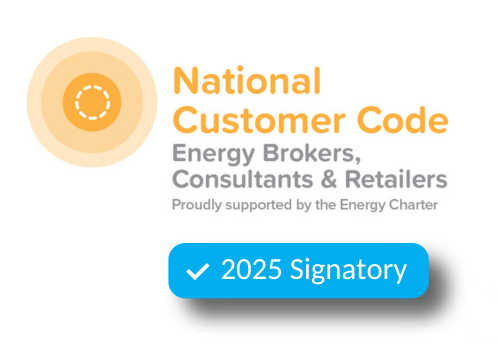
Market Commentary
Australia’s electricity markets experienced significant volatility throughout August 2024, driven by an unusual confluence of record wind generation and unseasonably hot weather in northern states.
These factors have sent spot and wholesale futures prices on a wild ride, reflecting the increasingly complex dynamics of our national energy landscape.
On August 24, rooftop solar played a pivotal role in pushing electricity demand to an unprecedented winter low of just 12,144 MW. While more Australians are turning to self-generated power, total maximum demand held steady at around 23,000 MW—yet another seasonal record low in operational demand.
The Australian Energy Market Operator (AEMO) reported startlingly low average prices across the National Electricity Market (NEM), which interlinks Queensland, New South Wales, Victoria, South Australia, and Tasmania. From 8 am to 4 pm, prices plummeted to between minus $30 and minus $68 per megawatt hour. AEMO noted this event marked a new winter minimum in operational demand, shattering the previous low of 13,339 MW recorded just a year ago. Notably, New South Wales, South Australia, and Victoria also registered fresh winter lows, underscoring the profound impact of distributed generation.
In Queensland, the energy landscape brightened with the return to service of the Callide C power station.
Nation’s Power Plants Back Online with Renewables Leading the Charge
For the first time in two years, Australia’s coal generation fleet is fully operational and free from unplanned outages. This rare stability, coupled with a resurgence in renewable energy output, has provided much-needed relief to electricity prices, which have been under pressure in recent months.
Yet the calm may be short-lived. Rising tensions in the Middle East pose a looming threat to global energy markets, with potential knock-on effects for Australia. The late August heatwave has also stirred fears of a scorching summer ahead, raising the spectre of increased electricity demand for cooling, potential grid stress, and the unwelcome possibility of load-shedding.
Coal’s Declining Grip on the Grid: A Tipping Point for Renewables
In a historic shift, coal’s dominance in Australia’s electricity supply dropped below 50% for an entire week for the first time. This milestone, with coal contributing just 49.9% of the NEM’s power, signals a fundamental change driven by robust winds and the relentless rise of rooftop solar.
Though coal still accounts for more than 56% of annual power generation, this dip is seen as a watershed moment. Renewable energy sources surged to a record 47.5% of generation that same week, a trend that AEMO expects will continue. The market also experienced negative wholesale prices and record curtailments, particularly in large-scale solar projects—a sign of the growing pains in Australia’s energy transition.
As aging coal plants undergo maintenance later this year, analysts predict even greater peaks in renewable energy generation, potentially accelerating the phase-out of coal.
Renewable Investments Strengthen Market Outlook
AEMO’s latest 10-year outlook offers a more optimistic view of Australia’s electricity market, buoyed by recent investments in renewable energy and storage. The 2024 Electricity Statement of Opportunities (ESOO) highlights the addition of nearly 6 GW of new large-scale generation and storage projects and 365 km of new transmission lines, significantly reducing the risk of supply gaps.
This is a sharp turnaround from earlier warnings of potential shortfalls, particularly in New South Wales, where concerns had prompted the state government to extend the life of the Eraring coal plant. AEMO CEO Daniel Westerman emphasised the importance of continued progress in renewable energy and storage to ensure grid reliability. Delays or lack of investment could jeopardise this fragile stability.
The federal government has seized on the report as an endorsement of its renewable energy policies, while criticising the opposition’s push for nuclear power as an alternative. The report underscores the urgency of completing planned projects on schedule to avoid future supply issues, especially in key states like Victoria, New South Wales, and South Australia.
South Australia Achieves Net Renewable Surplus in Winter’s Final Week
In a remarkable achievement, South Australia generated more than 100% of its electricity from renewable sources in the last week of winter, thanks to robust wind and solar output. This milestone marks significant progress toward the state’s ambitious goal of reaching 100% net renewables by 2027.
Wind power accounted for 57.8% of the electricity mix, while rooftop and utility-scale solar contributed a combined 19.5%. Despite some reliance on gas for system stability, the state exported far more electricity than it imported during this period. The week also witnessed negative wholesale prices, highlighting the economic implications of such high renewable penetration.
Middle East Tensions Cast Shadow Over Energy Markets
The escalation of conflict in the Middle East is casting a long shadow over global oil and gas markets, with potential ramifications for Australia. Historically, spikes in international gas prices have rippled through to the domestic market as Australian producers prioritise exports over local supply. Markets are already reacting to the growing risks of further escalation in this volatile region.
Callide C4 Returns to service
After an arduous 1,193-day hiatus, Callide C4 has finally returned to service, marking a significant milestone in stabilising Australia’s energy market. The coal-fired generator, which faced substantial challenges over the past three years, including an explosion in May 2021 and a cooling tower collapse in October 2022, is gradually ramping up its output.
As of September 1, the plant’s availability was below full capacity at 168 MW, but this is set to rise to 420 MW after a series of planned inspections and short outages. Full capacity of 466 MW is expected by mid-September, marking the end of a turbulent chapter in Queensland’s energy saga.
Neoen Expands Western Downs Battery
Neoen is doubling the capacity of its Western Downs battery in Queensland to 540 MW and 1080 MWh, following a 10-year “virtual battery” contract with AGL Energy.
The first stage of the Western Downs battery is now in the commissioning phase, with the second stage expected to be operational by 2026.
New South Wales
Wholesale Electricity Base Load Futures:
*The ASX has ceased to report on electricity futures prices for the year 2024. As a result, reporting now covers the years 2025, 2026, 2027
Average Movement Summary:
| Avg Rate Movement Since: | 1-Aug-2024 | 1-Jul-2024 | 1-Jun-2024 | 1-Mar-2024 | 1-Sep-2023 | 1-Sep-2022 |
| NSW / ACT – Average | ⇩ 3.80% | ⇩ 13.14% | ⇩ 14.03% | ⇧ 11.27% | ⇩ 5.92% | ⇩ 14.04% |
New South Wales electricity futures prices for 2025 started the month at $134/MWh, dipping quite sharply to $114 in the third week of the month, before ticking up to close the month at 118/MWh.
Prices for 2026/27 followed the same trend. Prices have come down since the crisis in October 2022 and are $3/MWh cheaper than the same period last year.
Start comparing current market offers and make your procurement process a breeze. Take the first step and get started here!
Commentary:
- New South Wales spot prices increased substantially from $127/MWh in July to $174/MWh in August.
- Spot prices are substantially higher than August 2023, when the average spot price was $93/MWh.
- August was a very volatile month in NSW with 2 instances of the new market cap of $17,500 registered. There were 35 instances where pricing was over $10,000/MWh. The bulk of trading took place at around the $160/MWh mark. Incidents of negative pricing increased to around 1,000, with a maximum low of -$595/MWh.
- Renewables shares in July 2024 climbed up to more familiar levels of 33% of the energy mix, up by 5%. Reliance on gas increased marginally from 2.6% to 2.7%. Coal contribution dropped by 5% to 64% of the generation mix.
- Battery contribution dropped from 0.2% to 0.1% of the state’s energy. The average cost for battery discharge increased to a whopping dropping to $910/MWh. Gas generation increased from $206/MWh to $506/MWh. Renewables cost an average of $110/MWh, and coal increased from $139/MWh to $203/MWh.
Start comparing current market offers and make your procurement process a breeze. Take the first step and get started here!
Victoria
Wholesale Electricity Base Load Futures:
*The ASX has ceased to report on electricity futures prices for the year 2024. As a result, reporting now covers the years 2025, 2026, 2027
Average Movement Summary:
| Avg Rate Movement Since: | 1-Aug-2024 | 1-Jul-2024 | 1-Jun-2024 | 1-Mar-2024 | 1-Sep-2023 | 1-Sep-2022 |
| VIC – Average | ⇩ 3.54% | ⇩ 10.36% | ⇩ 9.71% | ⇧ 19.53% | ⇩ 4.42% | ⇩ 9.69% |
Victoria electricity futures prices opened August 2024 at $76/MWh, dropping to $70/MWh and closing at $73/MWh. Prices for 2026 and 2027 followed the same pattern but at a cheaper cost.
Electricity prices have come down significantly since the crisis in October 2022 and are the same price that they were last in the same period last year.
Start comparing current market offers and make your procurement process a breeze. Take the first step and get started here!
Commentary:
- Victorian average spot prices dropped from $149/MWh in July to $143/MWh in August.
- Electricity spot prices are $79/MWh costlier in August 2024 than in the same period for 2023 when they were just $65/MWh.
- The trend was similar in Victoria. There were 2 instances where pricing hit the market cap and 33 instances of pricing above $10,000. The bulk of trading occurred around the $130/MWh mark.
- Incidents of negative pricing increased to around 2000 with a low of -$90/MWh.
- The share of renewables generation climbed by 9% to 42%, mostly due to bumper wind generation. Coal generation dropped to from 61% to 55%. Gas dropped from 5.6% of the generation mix to 2.1%.
- Battery supply remained at 0.5% of electricity, and generation cost increased from an average of $263/MWh to $590/MWh. Renewables cost an average of $71/MWh, while coal increased by $10/MWh to $157/MWh. Gas generation increased from $250/MWh to $655/MWh.
Queensland
Wholesale Electricity Base Load Futures:
*The ASX has ceased to report on electricity futures prices for the year 2024. As a result, reporting now covers the years 2025, 2026, 2027
Average Movement Summary:
| Avg Rate Movement Since: | 1-Aug-2024 | 1-Jul-2024 | 1-Jun-2024 | 1-Mar-2024 | 1-Sep-2023 | 1-Sep-2022 |
| QLD – Average | ⇩ 1.59% | ⇩ 8.87% | ⇩ 7.97% | ⇧ 12.28% | ⇧ 5.04% | ⇧ 7.33% |
Queensland futures electricity prices for 2025 opened at $104 at the start of August, dropping to $99/MWh, closing off the month higher at $103/MWh. Prices for 2026 and 2027 followed the same trend but at a cheaper cost
Electricity prices have come down since the crisis in October 2022 but are $8/MWh costlier than the same period last year.
Start comparing current market offers and make your procurement process a breeze. Take the first step and get started here!
Commentary:
- Queensland electricity spot prices increased from $119/MWh in July to $130 /MWh at the end of August.
- Queensland spot prices are costlier than they were in June 2023, when the average price was $67/MWh.
- Queensland registered a spot high of $15,535. Usually, one of the more volatile states, Queensland did not experience the extended high prices in Victoria and NSW. There were 33 instances of pricing above $1,000/MWh. There were around 1,500 instances of negative pricing with a low of -$351/MWh. The bulk of trading occurred at the $120/MWh mark.
- Renewables in Queensland have performed poorly in 2024, but August built on gains made in July, increasing from 27% to 29.2%. Coal generation remained about the same as July at 63.7% contribution. Gas dropped slightly from 8.8% to 8% the energy mix.
- Batteries supplied 0.1% of total generation. Battery energy cost $365/MWh in August. Gas averaged a cost of $238/MWh, coal $138/MWh and renewables $54/MWh.
South Australia
Wholesale Electricity Base Load Futures:
*The ASX has ceased to report on electricity futures prices for the year 2024. As a result, reporting now covers the years 2025, 2026, 2027
Average Movement Summary:
| Avg Rate Movement Since: | 1-Aug-2024 | 1-Jul-2024 | 1-Jun-2024 | 1-Mar-2024 | 1-Sep-2023 | 1-Sep-2022 |
| SA – Average | ⇩ 0.09% | ⇩ 2.38% | ⇧ 5.59% | ⇧ 27.07% | ⇩ 13.03% | ⇩ 3.30% |
As usual, South Australia’s wholesale electricity futures prices for August 2024 displayed a different trend to other states, due to its different energy mix, of which the majority are renewables and the rest gas.
2025 futures started the month at $106/MWh, remaining relatively stable and closing the month at $105/MWh. Prices for 2026 and 2027 were initially significantly cheaper.
Prices have come down substantially since the crisis in October 2022 and are $7/MWh cheaper than last year.
Start comparing current market offers and make your procurement process a breeze. Take the first step and get started here!
Commentary:
- SA’s average electricity spot prices dropped drastically from $241/MWh in July to $149/MWh in August 2024.
- Electricity prices are cheaper than the same period last year when they averaged $160/MWh.
- SA experienced two instances where pricing almost hit the market cap at $17,200/MWh. There were a further 41 instances where pricing was close to or above $10,000/MWh Like other states, pricing was consistently high throughout August.
- Around 2,500 negative pricing incidents were recorded during August, with a low of -$563.
- Renewables climbed from 67% of generation to 75.5%. Conversely, gas generation shrank from 31% to 23%,
- Battery dropped from 1.1% to 0.6% and averaged a cost of $556/MWh. Gas costs an average of $420/MWh, and renewables dropped from $109/MWh to $35/MWh.
Australia’s electricity markets experienced significant volatility throughout August, driven by an unusual confluence of record wind generation and unseasonably hot weather in the Northern States.
Depending on your business’s risk appetite, now could be a good time to secure a new energy contract.
Act now! Reach out to one of our experienced energy consultants today and gain valuable insight into the potential costs that may lie ahead. Don’t wait—take control of your energy expenses now!
We hope you have found our electricity market update for July 2024 informative and helpful. We understand that these are challenging times and we are here to support you. If you would like to delve deeper into the energy market’s previous months, you can find our monthly energy market reviews here.
Why Choose Us?
Expert Advice: Our team of energy consultants has in-depth knowledge of the energy market and can provide tailored advice to suit your business needs.
Cost Savings: Learn how to reduce your electricity costs and improve your business’s energy sustainability.
Proactive Planning: Stay ahead of market changes and make informed decisions with our comprehensive market updates.
Contact our team for advice on reducing electricity costs and improving your business’ energy sustainability. We are here to assist you and explore your options together.
Explainer: Why we focus on Wholesale Futures Prices
Wholesale Futures Price: This reflects what the market expects wholesale electricity spot rates to be for future periods. The offers that commercial and industrial (C&I) customers receive via Leading Edge Energy are closely correlated to wholesale prices on the ASX Energy futures market; this is why we focus on these prices in our commentary.
Spot Price: This represents how much the spot market is charging for electricity currently based on demand and supply. Spot prices go up when demand is high and supply is tight. You can view live Spot Prices here.
You can learn more about the difference between wholesale electricity futures and spot prices in our blog section.
Disclaimer: The information in this communication is for general information purposes only. It is not intended as financial or investment advice and should not be interpreted or relied upon as such.
We source, analyse, compare and rank commercial, industrial and multisite energy quotes. Obligation Free.
Chat with one of our experienced consultants today and get the insights your business needs to help manage the risks associated with volatile electricity and natural gas markets. Our energy procurement service is obligation-free and provides a time-saving way of securing lower energy rates from our panel of fifteen energy retailers.

Get advice from our Energy Management Consultants

Ben Wallington
Technical Manager
Get in Touch
Feel free to call or e-mail us. Or just fill in the form below and we’ll contact you for an obligation-free discussion.
Are you ready to save on business energy costs?
Get Started
Leading Edge Energy is proud to be a signatory of the National Customer Code for Energy Brokers, Consultants and Retailers.